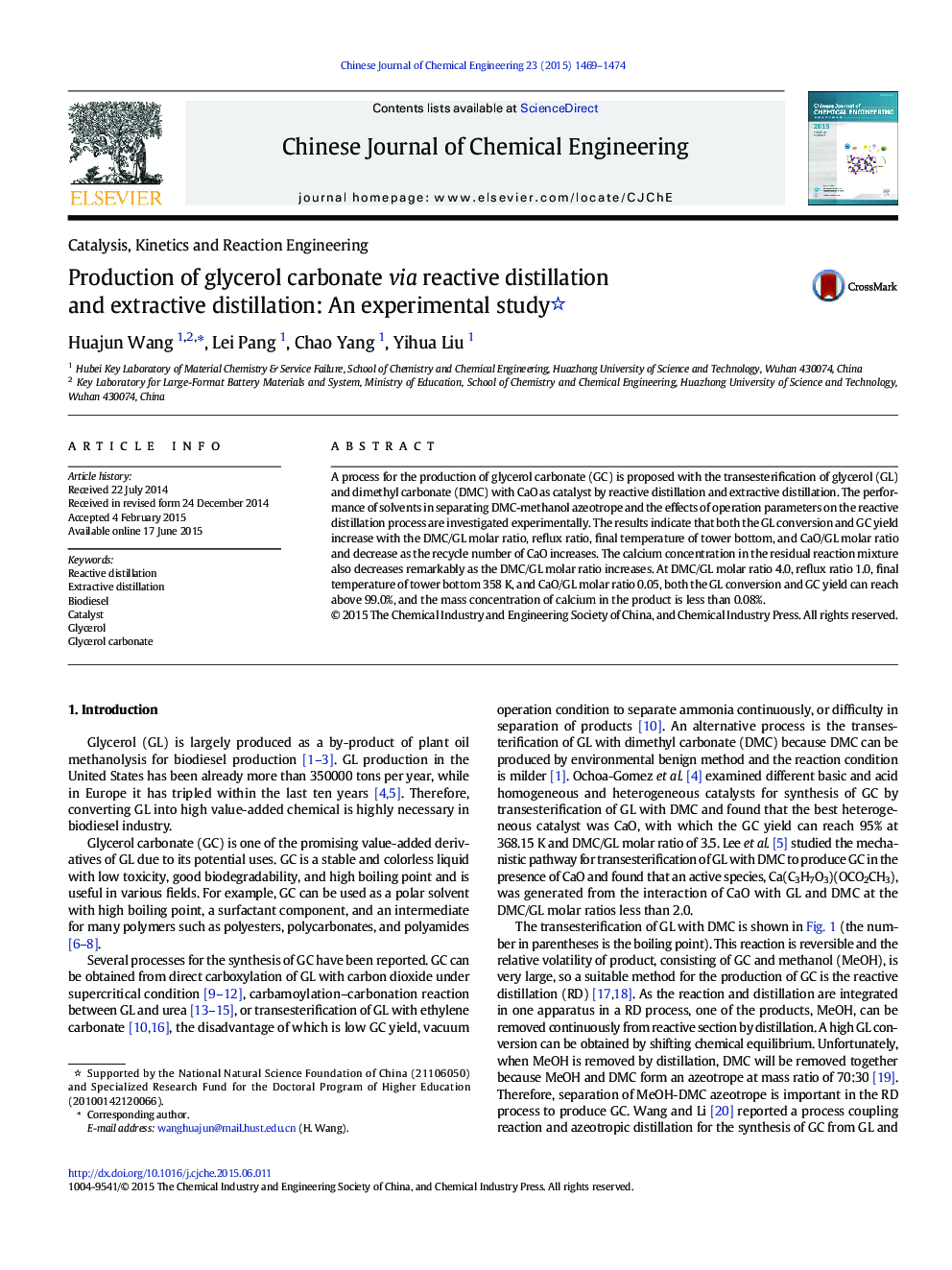| کد مقاله | کد نشریه | سال انتشار | مقاله انگلیسی | نسخه تمام متن |
|---|---|---|---|---|
| 167002 | 1423396 | 2015 | 6 صفحه PDF | دانلود رایگان |
A process for the production of glycerol carbonate (GC) is proposed with the transesterification of glycerol (GL) and dimethyl carbonate (DMC) with CaO as catalyst by reactive distillation and extractive distillation. The performance of solvents in separating DMC-methanol azeotrope and the effects of operation parameters on the reactive distillation process are investigated experimentally. The results indicate that both the GL conversion and GC yield increase with the DMC/GL molar ratio, reflux ratio, final temperature of tower bottom, and CaO/GL molar ratio and decrease as the recycle number of CaO increases. The calcium concentration in the residual reaction mixture also decreases remarkably as the DMC/GL molar ratio increases. At DMC/GL molar ratio 4.0, reflux ratio 1.0, final temperature of tower bottom 358 K, and CaO/GL molar ratio 0.05, both the GL conversion and GC yield can reach above 99.0%, and the mass concentration of calcium in the product is less than 0.08%.
A process to produce glycerol carbonate (GC) from the transesterification of glycerol (GL) and dimethyl carbonate (DMC) with CaO as catalyst by reactive distillation (RD) and extractive distillation (ED) is proposed. In this process, GL and DMC are fed into the reactive section of the RD column. The bottom product of RD column is fed to a recovery column where DMC is separated from the mixture and high purity GC is obtained. The distillate of the RD column and solvent is fed into the ED column. Then, MeOH is withdrawn as the distillate of the ED column, while DMC and the solvent are obtained from the bottom of the ED column. Finally, DMC and the solvent are separated in a recovery column. The recovered DMC is recycled to the RD column.Figure optionsDownload as PowerPoint slide
Journal: Chinese Journal of Chemical Engineering - Volume 23, Issue 9, September 2015, Pages 1469–1474
